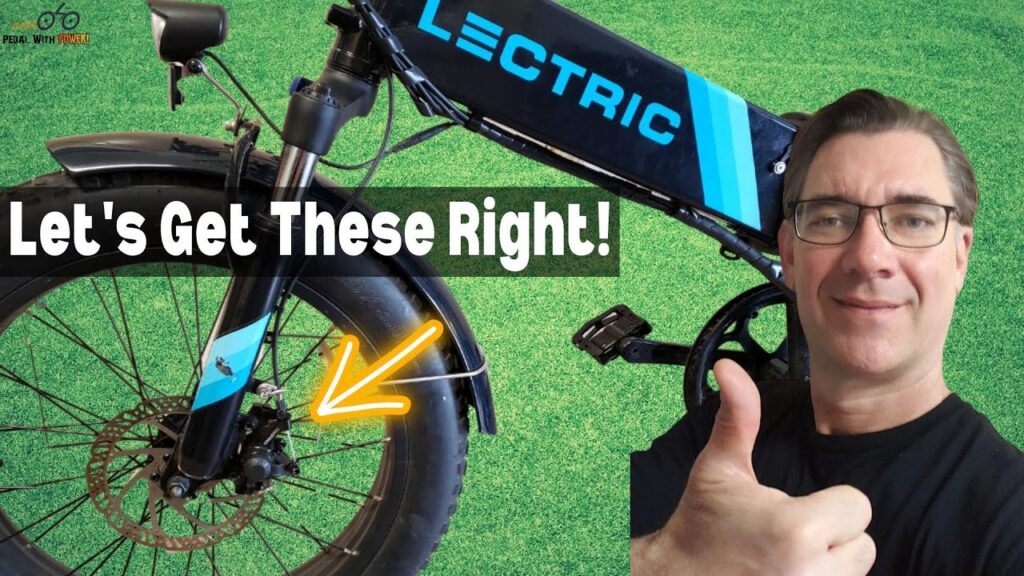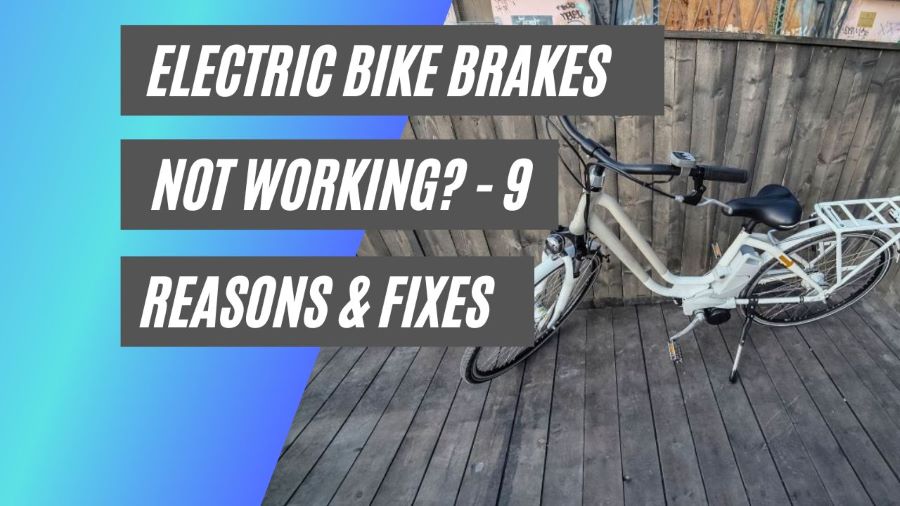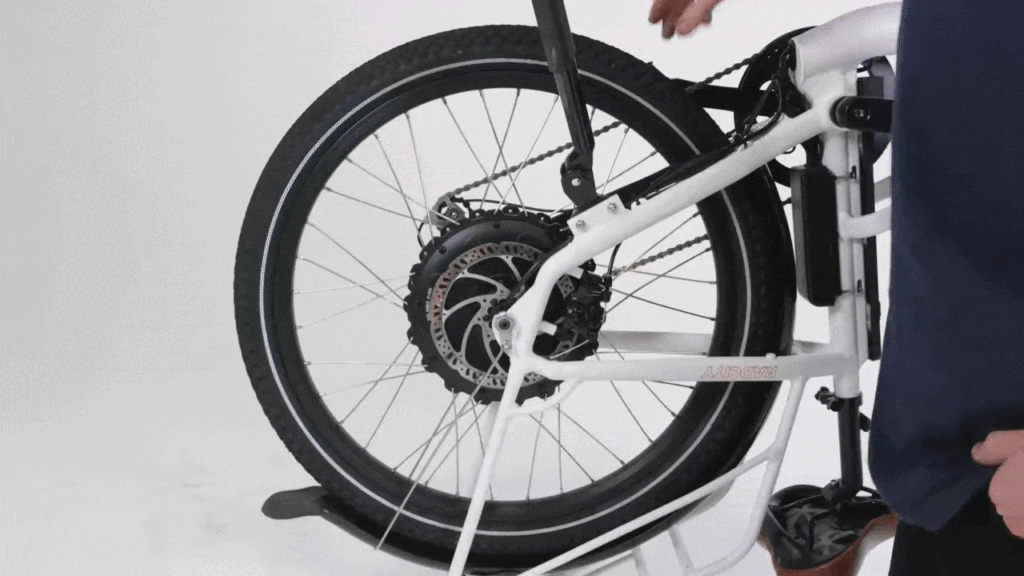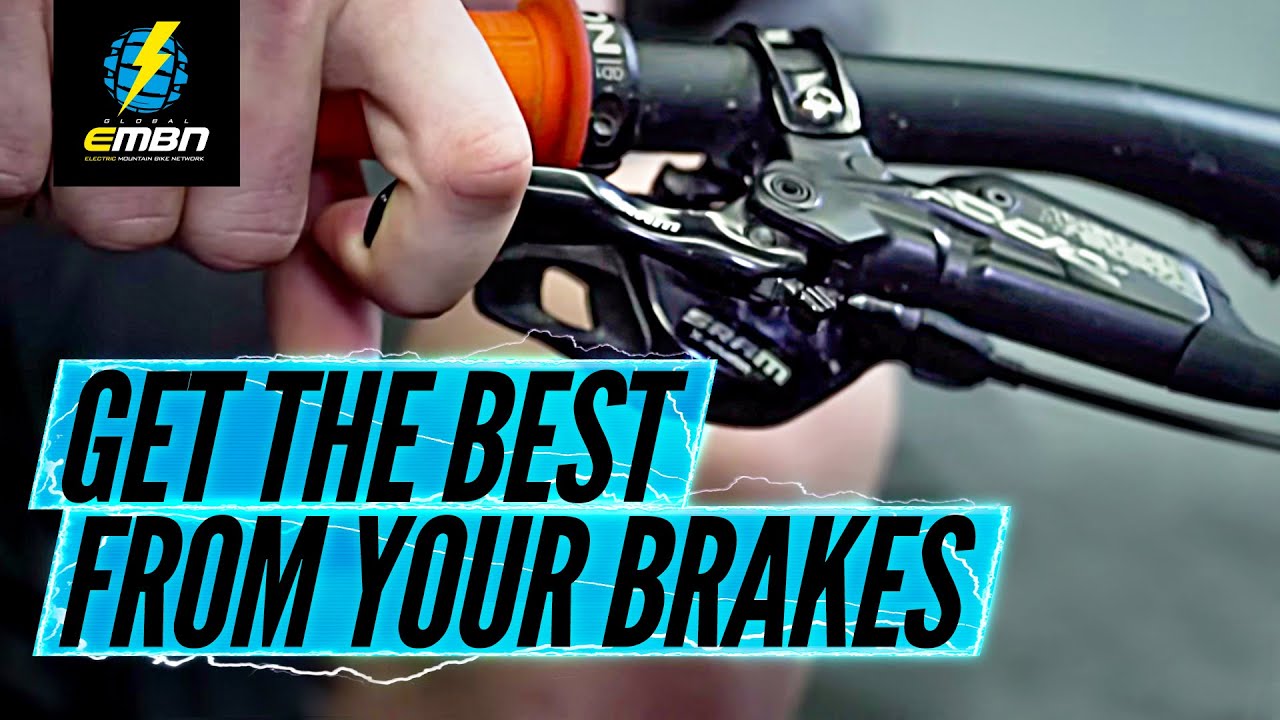If you’re the proud owner of an electric bike, you’re probably aware of the importance of regular maintenance. One crucial aspect that should never be overlooked is the brakes. Keeping them in top-notch condition not only ensures a safer ride but also elongates the lifespan of your e-bike. But just how often should you check and adjust the brakes? In this article, we’ll delve into this question and provide you with some valuable insights. Whether you’re new to e-bikes or a seasoned rider, our maintenance guide has got you covered with easy-to-follow guidelines, expert advice, and even product recommendations. So hop on, and let’s keep those brakes working flawlessly for your daily commutes, off-road escapades, and weekend adventures!

Factors Influencing Brake Maintenance Frequency
Riding Frequency and Duration
The frequency and duration of your rides play a significant role in determining how often you should perform brake maintenance on your electric bike. If you ride your e-bike frequently and for long distances, your brakes will experience more wear and tear. In such cases, regular brake maintenance is crucial to ensure optimum braking performance and safety.
Riding Conditions
The conditions in which you ride your electric bike also affect the frequency of brake maintenance. If you frequently ride in wet or muddy environments, your brakes may accumulate dirt and grime more quickly, leading to decreased braking efficiency. Similarly, riding in hilly terrain and engaging in frequent downhill rides can put additional strain on your brakes, necessitating more regular maintenance.
Brake Type
The type of brake system on your electric bike can also influence the frequency of brake maintenance. Different brake systems, such as disc brakes and rim brakes, have varying maintenance needs. Disc brakes, for example, typically require more frequent maintenance due to their complex design. It is important to familiarize yourself with the specific maintenance requirements of your brake system to ensure you are properly maintaining them.
Brake Pad Material
The material used in your brake pads can also impact how often maintenance is required. Organic brake pads tend to wear faster than metallic brake pads. Therefore, if you have organic brake pads, you may need to check and replace them more frequently. Understanding the material composition of your brake pads and their expected lifespan will help you gauge when maintenance is needed.
Manufacturer Recommendations
One of the most important factors influencing brake maintenance frequency is the manufacturer’s recommendations. Different electric bike manufacturers may have specific guidelines on how often you should check and adjust your brakes. It is essential to refer to the manufacturer’s manual or contact their customer support for information regarding the recommended maintenance intervals. Following these guidelines can help ensure your e-bike’s warranty remains valid and that you maintain optimal performance.
Signs of Brake Wear
Reduced Stopping Power
One of the clearest signs that your electric bike’s brakes need maintenance is a noticeable decrease in stopping power. If you find that it takes longer to come to a complete stop or that you need to apply excessive force on the brake levers, it is likely time to check your brakes. Reduced stopping power can be caused by worn brake pads, loose cables, or misaligned brake calipers.
Squealing or Screeching Noises
Unusual noises, such as squealing or screeching, coming from your brakes are indicators that maintenance is necessary. These noises can be caused by a variety of factors, including contaminated brake pads, worn brake pads, or misaligned brake components. Ignoring these noises can not only lead to further damage but also jeopardize your safety while riding.
Vibration or Pulsation
If you feel a vibration or pulsation in the brake levers when applying the brakes, it is a sign that your brakes need attention. This vibration or pulsation can be caused by uneven brake pad wear, warped brake rotors, or misaligned brake calipers. Failure to address these issues can result in decreased braking performance and potential safety hazards.
Spongy or Soft Brake Lever Feel
If your brake levers feel spongy or soft when you squeeze them, it indicates that air may be present in the brake system. Air bubbles in the brake lines can reduce brake fluid pressure and compromise braking performance. Bleeding the brake system and ensuring proper fluid levels can help restore a firm brake lever feel and ensure consistent stopping power.
Visual Inspection
Performing regular visual inspections of your brake components is essential to identify signs of wear or damage. Look for any excessive wear on the brake pads, such as thinning or uneven surfaces. Inspect the brake cables for fraying or looseness. Additionally, check the alignment of the brake calipers and rotors to ensure they are functioning correctly. Any visual abnormalities should prompt further investigation and maintenance.
Routine Brake Maintenance
Clean the Brake System Regularly
Regular cleaning of your electric bike’s brake system is essential to maintain optimal performance. Use a mild detergent or specialized brake cleaner to remove dirt, grime, and brake dust from the brake pads, rotors, and calipers. Avoid using abrasive materials that may damage the brake components. Cleaning the brake system regularly helps prevent contamination and ensures smooth, consistent braking.
Inspect Brake Pads
Regularly inspecting the condition of your brake pads is crucial for maintaining efficient braking. Check for signs of wear, such as thinning brake pads or uneven surfaces. If the brake pads have reached their wear limit, replace them promptly to avoid compromising your safety. It is also important to ensure proper alignment and clearance between the brake pads and rotors.
Adjust Brake Cable Tension
Proper brake cable tension is crucial for effective braking. Over time, brake cables may stretch, resulting in decreased brake responsiveness. Regularly check the tension of your brake cables and adjust them as needed. Consult your electric bike’s manufacturer manual or seek professional assistance if you are unsure how to properly adjust the brake cable tension.
Check Brake Lever and Caliper Alignment
Misaligned brake levers and calipers can lead to inefficient braking and premature wear. Regularly check the alignment of your brake levers and calipers to ensure they are properly positioned. Make any necessary adjustments or seek professional help to ensure proper alignment. Proper alignment will result in more consistent braking performance and prolong the lifespan of your brake components.
Lubricate Moving Parts
Applying lubrication to the moving parts of your brake system can help maintain smooth operation and prevent premature wear. Use a bicycle-specific lubricant to grease pivot points, springs, and other moving parts. However, avoid applying lubricant directly to the brake pads or rotors, as it can compromise braking performance. Regular lubrication will help prolong the lifespan of your brake components and improve overall performance.
Frequency of Brake Checks
Weekly Checks
Performing weekly brake checks is essential for staying on top of your electric bike’s maintenance needs. During these checks, inspect the overall condition of your brake system, including the brake pads, rotors, cables, and lever feel. Clean any dirt or debris from the brake components and adjust cable tension if necessary. Regular weekly checks will help identify any potential issues before they become major problems.
Monthly Checks
In addition to weekly checks, monthly brake checks provide a more comprehensive assessment of your electric bike’s braking system. During these checks, inspect the brake pads for wear and ensure proper alignment with the rotors. Check for any unusual noises or vibrations and address them promptly. Lubricate any moving parts as needed and thoroughly clean the brake system. Monthly checks help maintain consistent braking performance and extend the lifespan of your brake components.
After Wet or Muddy Rides
If you frequently ride in wet or muddy conditions, it is important to perform brake maintenance after every ride in such conditions. Wet and muddy environments can lead to the accumulation of dirt, grime, and moisture on your brake components, compromising their performance. After wet or muddy rides, clean your brake system thoroughly and inspect for any signs of wear or damage.
After Long Descents
Long descents put additional stress on your brakes, resulting in increased heat buildup and potential wear. After extended downhill rides, it is crucial to check and adjust your brakes. Inspect the brake pads for signs of overheating or glazing, and ensure proper pad clearance and alignment. Address any issues promptly to maintain reliable braking performance.
After Brake Pad Replacement
Whenever you replace your brake pads, it is essential to perform a thorough brake check. After installing new brake pads, ensure proper alignment and clearance with the rotors. Adjust the brake cable tension if necessary and perform a test ride to ensure the new pads are properly bedded in. Regular checks after brake pad replacement will help ensure optimal braking performance.

Adjusting Brake Pads
Inspect Brake Pad Clearance
Proper brake pad clearance is crucial for efficient braking and optimal pad wear. Ensure there is adequate space between the brake pad and the rotor to prevent rubbing or excessive drag. Inspect both sides of the rotor to ensure even clearance on each side. Uneven brake pad clearance can result in uneven braking and premature wear.
Align Brake Pads with Rotors
Misaligned brake pads can lead to uneven braking performance and premature wear. To align the brake pads with the rotors, loosen the bolts holding the caliper in place and gently squeeze the brake lever. This will center the caliper and bring the brake pads into alignment. Once aligned, tighten the bolts securely. Take care not to overtighten, as it can lead to brake drag or other issues.
Adjust Pad Positioning
In some cases, you may need to adjust the position of the brake pads to achieve optimal braking performance. Loosen the brake pad retaining bolt and carefully move the brake pad to the desired position. Ensure the brake pad is aligned with the rotor and there is even clearance on both sides. Once adjusted, tighten the retaining bolt securely.
Ensure Uniform Pad Wear
Monitoring the wear pattern on your brake pads can help identify any issues with alignment or brake operation. Ideally, the brake pads should wear evenly across their entire surface. If you notice uneven wear, it may indicate a problem with alignment or contamination. Address any issues promptly to ensure even pad wear and consistent braking performance.
Avoid Over-Tightening
When adjusting or tightening brake components, it is important to avoid overtightening. Over-tightening can result in brake drag, premature pad wear, or damage to other brake components. Use an adjustable torque wrench to ensure you tighten bolts and fasteners to the manufacturer’s recommended torque specifications. This will help prevent damage and maintain proper brake operation.
Importance of Regular Brake Adjustments
Ensure Optimum Braking Performance
Regular brake adjustments are crucial for maintaining optimum braking performance on your electric bike. Well-adjusted brakes ensure consistent stopping power and control, keeping you safe on the road or trail. Neglecting brake adjustments can lead to decreased performance, longer stopping distances, and potential safety hazards.
Prevent Excessive Brake Pad Wear
Proper brake adjustments can help prevent excessive brake pad wear. When the brakes are properly adjusted, the pads will make even contact with the rotor, distributing the braking force evenly. This prevents one area of the pad from wearing out faster than the rest, resulting in prolonged pad life and cost savings.
Maintain Consistent Stopping Power
Regular brake adjustments contribute to maintaining consistent stopping power. A properly adjusted brake system ensures that the pads engage the rotors evenly and with the appropriate force. This consistency allows you to predict and control your braking performance, enhancing your overall riding experience and safety.
Maximize Safety and Control
Regular brake adjustments are essential for maximizing safety and control while riding your e-bike. Properly adjusted brakes provide reliable stopping power, allowing you to navigate various riding conditions with confidence. Whether you encounter sudden obstacles or need to perform emergency stops, well-maintained brakes can mean the difference between a safe maneuver and a potential accident.

Seeking Professional Help
Complex Brake Adjustments
While many brake maintenance tasks can be performed at home, some adjustments may require professional help. If you encounter complex brake issues, such as malfunctioning hydraulic systems or warped brake rotors, it is advisable to seek assistance from a qualified bike mechanic. They have the expertise and specialized tools to diagnose and address intricate brake problems effectively.
Unusual Brake Behavior
If you notice any unusual behavior with your brakes, such as inconsistent stopping power, a spongy lever feel, or persistent noise, it is best to consult a professional. These symptoms may indicate more significant underlying issues that require expert diagnosis and repair. Promptly seeking professional help can prevent further damage and ensure your brakes are restored to their optimal condition.
Lack of Mechanical Knowledge
Not everyone possesses the mechanical knowledge and skills required for advanced brake maintenance. If you are unsure about performing any brake adjustments, it is better to err on the side of caution and consult a professional. They can guide you through the necessary steps or handle the maintenance tasks for you, ensuring that your brakes are properly adjusted and safe to use.
Manufacturer Warranty Considerations
If your electric bike is still under warranty, it is essential to consider manufacturer recommendations regarding brake maintenance and repairs. Some warranties may require that all maintenance and repairs be performed by authorized service centers or qualified mechanics. Failing to adhere to these guidelines may void your warranty coverage. Always consult the manufacturer’s warranty terms or contact their customer support for clarification.
Common Brake Maintenance Mistakes to Avoid
Overlooking Visual Inspection
Neglecting visual inspections of your brake components is a common mistake that can lead to missed signs of wear or damage. Regularly inspecting your brake pads, cables, and calipers for any abnormalities allows you to catch potential issues early on and address them promptly.
Ignoring Unusual Brake Noises
Unusual brake noises, such as squealing or screeching, are often ignored or dismissed as normal. However, these noises can indicate underlying problems with your brake system that need attention. Ignoring these noises can lead to further damage and compromise your safety on the road.
Using the Wrong Cleaning Products
Using the wrong cleaning products or harsh chemicals on your brake components can cause damage and reduce their effectiveness. Avoid using abrasive materials or solvents that can corrode or erode brake parts. Opt for mild detergents or specialized brake cleaning solutions recommended by your electric bike manufacturer.
Misaligning Brake Pads
Improper alignment of brake pads with the rotors can result in uneven braking, excessive wear, and potential damage to the brake system. Take care to align the brake pads correctly, ensuring even clearance on both sides of the rotor. Misaligned brake pads should be adjusted promptly to maintain optimal braking performance.
Overlooking Brake Lever Adjustments
Brake lever adjustments, such as cable tension and reach, play a crucial role in the overall braking performance of your electric bike. Neglecting these adjustments can result in a spongy lever feel, decreased stopping power, or reduced control. Regularly check and adjust your brake levers according to the manufacturer’s guidelines to maintain optimal performance.

Top Recommended Brake Maintenance Tools
Torque Wrench
A torque wrench is an essential tool for precise tightening of bolts and fasteners on your brake system. It ensures that the bolts are tightened to the manufacturer’s recommended torque specifications, preventing damage and promoting safe operation.
Cable Cutter
A cable cutter is useful for trimming brake cables during maintenance or installation. Having a clean, precise cut ensures proper cable seating and improves overall braking performance.
Lubricant and Degreaser
Using a quality lubricant and degreaser is crucial for maintaining smooth brake operation. A bicycle-specific lubricant helps reduce friction, while a degreaser effectively removes dirt, grime, and brake dust from the brake system.
Disc Brake Tool Set
A disc brake tool set contains specialized tools necessary for brake maintenance, such as rotor truing tools, caliper alignment tools, and piston reset tools. Investing in a high-quality disc brake tool set will ensure you have the necessary tools for proper brake maintenance.
Adjustable Wrench
An adjustable wrench is a versatile tool that can be used for various brake maintenance tasks, such as tightening brake caliper bolts or adjusting brake lever reach. Opt for a high-quality adjustable wrench that provides a secure grip and precise adjustment.
Conclusion
Regular brake maintenance is essential for maximizing the lifespan and performance of your electric bike. Factors such as riding frequency, riding conditions, brake type, brake pad material, and manufacturer recommendations influence the frequency of brake maintenance. Signs of brake wear, such as reduced stopping power, unusual noises, vibration, spongy lever feel, and visual abnormalities, indicate that maintenance is necessary.
Routine brake maintenance tasks include cleaning the brake system, inspecting brake pads, adjusting brake cable tension, checking brake lever and caliper alignment, and lubricating moving parts. The frequency of brake checks depends on factors such as weekly checks, monthly checks, riding conditions, and brake pad replacement.
Adjusting brake pads involves inspecting brake pad clearance, aligning brake pads with rotors, adjusting pad positioning, ensuring uniform pad wear, and avoiding over-tightening. Regular brake adjustments are vital for optimal braking performance, preventing excessive brake pad wear, maintaining consistent stopping power, and maximizing safety and control.
Seek professional help for complex brake adjustments, unusual brake behavior, lack of mechanical knowledge, or when considering manufacturer warranty considerations. Common brake maintenance mistakes to avoid include overlooking visual inspection, ignoring unusual brake noises, using the wrong cleaning products, misaligning brake pads, and overlooking brake lever adjustments.
Top recommended brake maintenance tools include a torque wrench, cable cutter, lubricant and degreaser, disc brake tool set, and adjustable wrench. By adhering to regular brake maintenance practices, following manufacturer recommendations, and prioritizing safety and performance, you can extend the lifespan of your electric bike and ensure enjoyable and safe rides.




